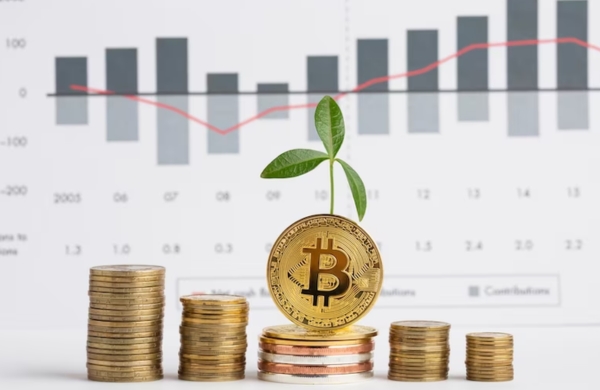
The world of cryptocurrency can be perplexing, with its array of technical jargon and overlapping terminologies. Two concepts that often cause confusion among investors are yield farming and staking. While both involve committing crypto assets and receiving rewards, they serve distinct purposes and come with their own sets of risks. In this article, we will delve into the details of Yield Farming vs. Staking, highlighting their differences, utility, risk levels, and potential rewards.
Yield Farming: Maximizing Returns in DeFi
Yield farming, as the name suggests, revolves around investors seeking to maximize their returns, or yield, within the decentralized finance (DeFi) space. This strategy involves putting assets to work on various protocols. For instance, yield farmers can deposit their assets into decentralized exchanges (DEXs) like Uniswap or lending platforms such as Ave.
By doing so, they facilitate trades and loans, earning a portion of the platform’s fees or the interest paid by borrowers. Yield farming enables investors to leverage services like lending, borrowing, swapping, and leverage trading, offered by DeFi protocols.
Also Read: Tectonic Crypto: Review of Performance and Features in 2023
Staking: Security and Rewards in Proof-of-Stake Blockchains
Staking, on the other hand, involves locking up a crypto asset to participate in a Proof-of-Stake (PoS) blockchain’s security system and receive rewards in return. This process aids in decentralizing and strengthening the network. PoS blockchains, like Ethereum, utilize staking to secure their networks and validate transactions.
Investors commit their tokens, and in exchange, they receive rewards based on the amount they have staked. Unlike yield farming, which focuses on maximizing returns through active participation in DeFi protocols, staking serves the purpose of enhancing blockchain security and validating transactions.
Distinguishing Factors: Utility and Lock-up Periods
While both staking and yield farming involve committing crypto assets and earning rewards, they differ in terms of utility and lock-up periods. Staking primarily serves security purposes in PoS blockchains, while yield farming enables investors to provide liquidity and utilize DeFi protocols’ services.
Staking usually requires a lock-up period during which the tokens are inaccessible, providing stability to the network. In contrast, yield farming allows for more flexibility, as investors can usually withdraw their tokens instantly from DeFi platforms.
Risk Assessment: Understanding the Risks Involved
It is crucial to recognize that both yield farmers and stakers are exposed to varying levels of risk. Staking is generally considered safer than yield farming due to its focus on blockchain security. However, stakers face risks such as slashing if validators are penalized for errors or malicious activities. Additionally, they may experience financial losses if they are unable to sell their crypto during the unlocking period.
Yield farmers, on the other hand, encounter higher risks due to impermanent loss, smart contract vulnerabilities, rug pools, and other forms of scams. The strategies employed in yield farming often involve leverage and interaction with multiple DeFi protocols, some of which may be new and untested.
Also Read: 8 Common Mistakes to Avoid in Crypto Investing
Rewards: Comparing Yields and Returns
Yield farming crypto typically offers higher yields compared to the more conservative rewards from staking. Staking often provides annual percentage yields (APYs) in the single digits, reflecting its focus on blockchain security rather than high returns. Yield farming, however, comes with higher risk and employs more complex strategies, potentially offering greater rewards. It is important to weigh the potential rewards against the associated risks before deciding on a strategy that aligns with one’s risk appetite.
Conclusion
In the world of cryptocurrency, understanding the differences between yield farming and staking is crucial for investors. While both involve committing crypto assets and earning rewards, they serve distinct purposes and come with their own sets of risks.
Yield farming Crypto focuses on maximizing returns through active participation in DeFi protocols, while staking enhances blockchain security in PoS blockchains. Investors must carefully evaluate the risks and potential rewards associated with each strategy to make informed decisions that align with their investment goals and risk tolerance.

Leave a Reply